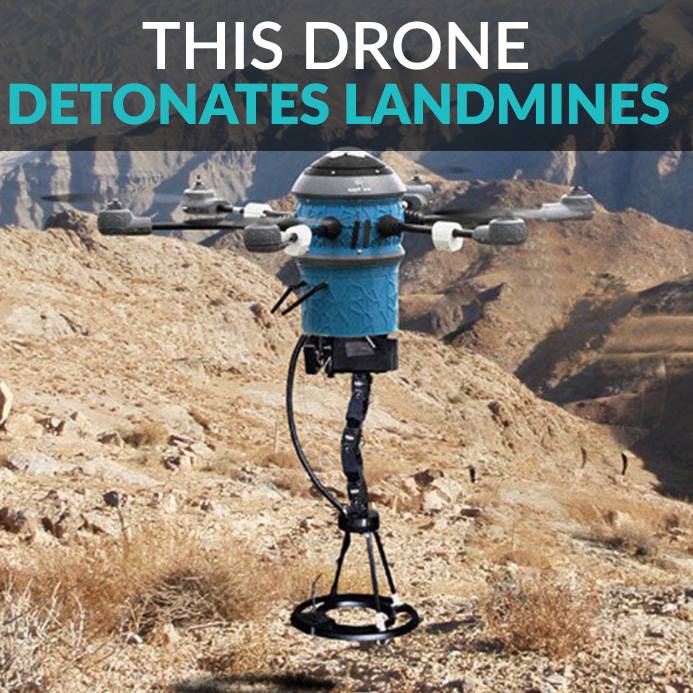There are 110 million active landmines in the world. This drone is detonating them, one by one: http://kck.st/29RtcCo

There are 110 million active landmines in the world. This drone is detonating them, one by one: http://kck.st/29RtcCo
Technology developments will continue to transform every field of aerospace, just as they have the over the last 100 years.
AWESOME.
New UCLA research suggests that a gene-based immunotherapy that has shown promising results against cancer could also be used against HIV, the virus that causes AIDS.
In a study to be published in an August issue of the bi-monthly peer-reviewed Journal of Virology, researchers with the UCLA AIDS Institute and Center for AIDS Research found that recently discovered potent antibodies can be used to generate chimeric antigen receptors, or CARs, that can be used to kill cells infected with HIV-1.
This Catalonian chemistry wiz is developing a jet-pack engine to deliver medicine inside our bodies.
Sure, chatbots are useful for service industries like hospitality and food delivery, but in health care? Some groups are testing the use of chatbots to retrieve medical information from within a messaging app. At first glance, that seems a bit impersonal, but a closer look reveals a wide range of use cases where bots could make your next visit to the hospital, doctor’s office, or pharmacy faster and more effective.
Let’s run this back a bit. If you’re not familiar with bots, here’s a brief explanation. Bots are software applications that run automated tasks or scripts that serve as shortcuts for completing a certain job, but they do it faster (a lot faster) and with verve. And in health care, we spend a lot of time spent generating and retrieving information.
By putting a trained army of bots inside an application — smartphone, desktop, whatever-top — health care workers can rapidly improve throughput by simply cutting out a bunch of steps. That’s something most care providers today would welcome, especially with millions of new people entering the system as a result of the Affordable Care Act and the aging of baby boomers. With the crush of increased data entry and new regulations, costs and rote work are skyrocketing.
Continue reading “How the most connected hospitals will use chatbots” »
Russian development of a nuclear rocket engine for deep space exploration to the moon and Mars received a funding boost of about $60 for 2016–2018.
A smartphone with direct cloud integration to enable the automatic switch over to cloud when space on the phone runs out.
Cloud computing is the future and unleasing its power on your smartphone is the next big thing. San Francisco-based device maker Nextbit has made a quick switch with its flagship “Cloud first” Android device Robin in India. IANS | Jul 29, 2016, 09.01 AM IST
Continue reading “NextBit Robin: A cloud storage smartphone for the future” »
Plastic packaging may seem impenetrable, and often nearly impossible to remove, but water molecules can still pass through. This permeability to moisture can reduce the lifespan of a product.
Packaging is everywhere, even for individual vegetables or fruits. Wrapping products ranging from electronics to food in plastic films protect them from bacteria, dust, and to some extent water.
According to Praveen C. Ramamurthy, the lifespan of a moisture-sensitive organic light-emitting diode can be maximized for more than a year if the packaging has the ability to restrict water vapor from penetrating at a rate less than 10-6 grams per square meter every day. Modern day packaging is not capable of accomplishing that goal, however Ramamurthy and colleagues wanted to find out if combining graphene to flexible polymer was sufficient.
